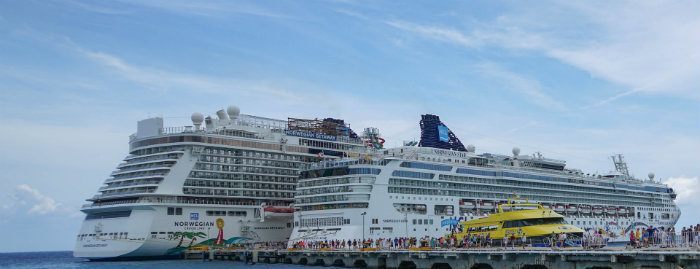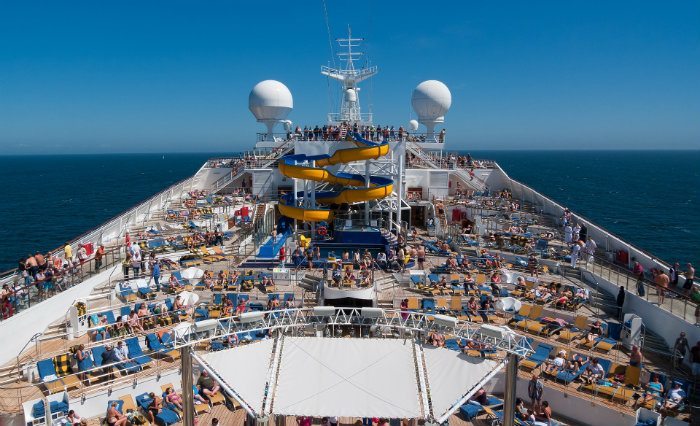Suffering A Fall On Board A Cruise Ship
Thousands of people from across the globe travel on board cruise ships because of the exciting vacation proposition they bring to the table. But many passengers suffer from personal injuries on board these cruise ships. Slipping and falling is one of the most common causes of injuries on cruise ships.
While cruise liners have a duty to ensure maximum safety and judicious care for passengers by properly maintaining ship premises, this isn’t always the case. Slippery and wet decks are more common than you think, making cruise ships prone to accidents from slips and falls. Statistics from the Cruise Line International Association (CLIA) showed that cruise lines carried nearly 9.96 million passengers embarked at various ports in the U.S across 2013.

Causes Of Slip And Fall Injuries On Cruise Ships
Cruise ship operators and owners are directly responsible for maintaining their premises to reduce slip and fall accidents, but they continue to occur. A cruise ship is obligated to keeping areas hazard free, but many crew members and cruise ships neglect to perform their duties adequately. In these instances, the responsibility of injuries will fall directly on the cruise liner. Slip and fall accidents on cruise ships occur because of:
- Slippery pool and deck areas.
- Inadequate lighting in exterior and interior spaces.
- Ragged or chipped stair railing.
- Worn out deck surfaces.
- Difficult-to-climb gangways.
- Getting in and out of tender boats.
- Inside bathrooms.
- Torn carpets in floors.
- Food trays left along pathways.
- Defective or poorly stored equipment.
Common injuries occur in the neck, back, knees, legs, wrists, ankles and head. Some can be more serious than others depending on the extent of the slip and fall incident.
What To Do In Case Of An Accident On A Cruise Ship?
While the first thing you need to undergo when you face a slip and fall accident is medical treatment, you must keep certain factors in mind to the best of your knowledge because this can help you in your quest to file a lawsuit. Make sure you consider these factors in the event of an unforeseen accident on board a cruise ship.
- Where and when did the slip and fall accident occur?
- What kind of injuries are you suffering from?
- How did the injury take place?
- What happened after the injury?
- Was anyone involved in your injury?
- Do you think it was the fault of the cruise liner for your injury?
- What is the degree of the injury you’re suffering from?
- What treatment have you received and how much more treatment do you need?
- Was the surface unreasonably slippery or not well maintained?
- Can you take photos of the injury-prone area?
If you think that you have a strong case against the cruise liner, then you can strengthen it with photos or videos of the area. You should also take notes of everything around you. While some details may seem insignificant to you, they may be important later when you need to recount the incident.
Keep in mind that not every accident on a cruise ship is the fault of the employees or the cruise line. If you are hurt on a cruise, you need to prove negligence on the cruise line’s part to hold them liable and to get compensation for your injuries. Negligence effectively means that the cruise line failed to take reasonable care of your safety, because of which you were injured or hurt.
While some slips and falls may seem like freak accidents to you, keep in mind that many instances are related to negligence on the part of cruise lines. For instance, falling on a staircase may seem like an accident, but it could be because of any of these factors:
- Water on the staircase.
- No, or poorly designed handrails.
- Curved handrails away from the stairs.
- Varying height steps.
- Shallow steps.
If you fall because of any of these factors, then the cruise line is directly responsible for your accident and you may have the opportunity to sue it for damages. Similarly, lack of warning for thresholds in certain areas can be termed as negligence on the part of cruise ships.
Cruise Line Lawsuit Cases In The US

A U.S. District Court based in Seattle awarded $21.5 million to an Illinois businessman who was struck in the head by a sliding glass door and went through a minor brain injury on a Holland America cruise ship. This was one of the largest payouts in recent history. The businessman was also awarded $5 million for future and past pain, along with emotional distress and suffering.
A passenger on board the Anthem of the Seas cruise ship has decided to file a lawsuit against the company for their decision to sail, despite a winter storm prediction. Bruce Simpson claims that he fell unconscious as the ship began to violently rock from side to side. The company has offered to refund the fares of all passengers and issued an official apology to them. The company has also decided to offer vouchers of 50 percent of what passengers paid for use on a future cruise ship.
Time Frame For Filing Lawsuits Against Cruise Liners
Keep in mind that the time frame for filing lawsuits against cruise lines is very limited. Lawsuits for cruise ship injuries are different from personal injury lawsuits, so you should know that the statute to file a lawsuit against a cruise line stands for one year from the date of the accident.
Many cruise lines have now included conditions in their tickets, so you may need to notify them in writing a few months after the incident of your intention to sue. In many instances, this timeline is between three to six months. Cruise lines aren’t going to make it easy for you because they run businesses, so you need to find a way to stay on top of your lawsuit.
Instances When A Cruise Liner Isn’t Liable For Paying Lawsuits
While you are able to sue the cruise liner for negligence on its own part and on the part of its employees, it may not always be legally liable for the negligence of its independent contractors. For instance, if you undertake a shore excursion with an independent contractor connected to the cruise ship, then you will not be able to sue the cruise liner in the event of a slip and fall accident. Many cruise liners specifically state that they aren’t responsible for the negligence of operators running shore excursions.
A cruise liner may also not be liable for the medical negligence of nurses and doctors in the ship’s medical centers. The medical staff may be regarded as independent contractors and not cruise line employees, so the shipping company may escape liability for the negligence of its medical staff on board. In these instances, you will have to sue the independent contractors directly, and not the cruise liner.
If you are hurt because of a slip and fall accident on a cruise, then you must be able to prove neglect in order to claim compensation. Proving injury liabilities for slip and fall accidents involves a significant amount of evidence accumulation and investigations to get to the bottom of the story. Cruise line companies will try their best to evade the lawsuit by portraying you as an unreliable witness or that the accident was the result of your own negligence, so you must be adequately prepared to tackle all types of difficult questions that may come your way. You must be able to prove that the cruise line neglected to take reasonable action for proper care and maintenance of the ship, which resulted in your injury.
